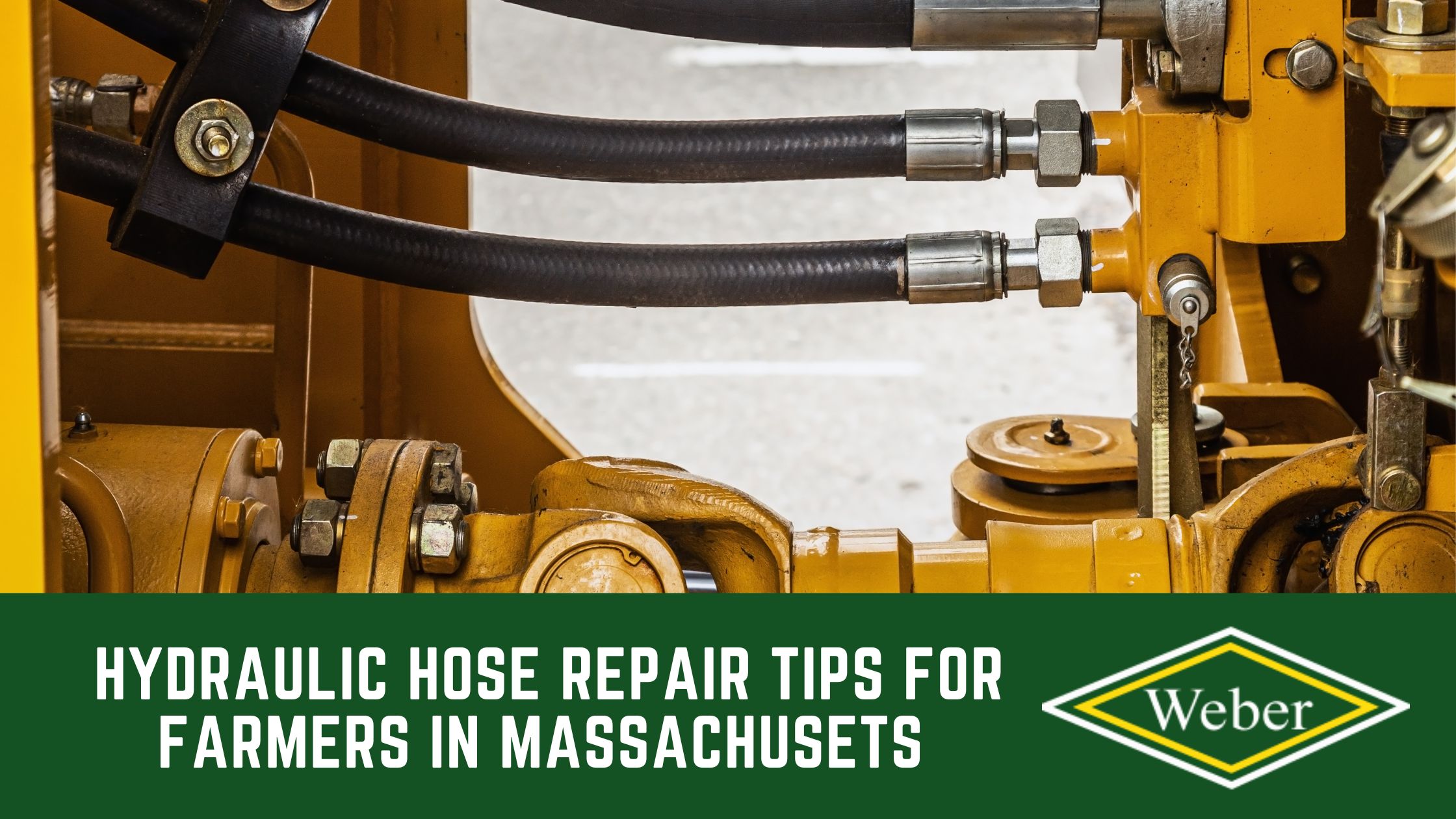Hydraulic systems are integral to modern farming equipment, and maintaining them is essential for efficient operation. In the heart of Massachusetts, farmers frequently encounter issues with hydraulic hoses, which can stop their work.
Understanding the basics of hydraulic hose repair can save time and prevent costly equipment downtime. This article provides practical tips and insights for farmers in Massachusetts to effectively address common hydraulic hose issues.
Key Takeaways:
- Identify: Quickly identifying leaks or damage in hydraulic hoses can save time and money.
- Repair: Simple repairs and proper maintenance can significantly extend the life of hydraulic hoses.
- Prevent: Regular checks of hydraulic systems help prevent future issues and maintain equipment efficiency.
Hydraulic Hose Basics
These hoses, key components in hydraulic systems, are responsible for transporting hydraulic fluid under pressure to various parts of your machinery, such as the steering system, brakes, and other operational parts.
There are several types of hydraulic hoses, including reinforced, coiled, corrugated, and articulated, each designed for specific pressures and flow rates.

Familiarity with the type of hose used in your equipment is important, as it affects the hose’s flexibility, strength, and suitability for different temperatures and fluids. Regularly inspecting these hoses for any signs of wear or damage and understanding their pressure ratings and compatibility with hydraulic fluids are the basic steps of maintenance.
Recognizing Signs of a Damaged Hydraulic Hose
- Visible Wear and Tear: Inspect for obvious signs of damage such as cracks, cuts, abrasions, or bulges on the hose’s surface. These imperfections can compromise the integrity of the hose and lead to failures.
- Fluid Leakage: Be alert for any signs of hydraulic fluid leakage. This could be noticeable wet spots, drips, or a coating of fluid along the hose or near the fittings and couplings. Fluid leakage is a clear indicator that the hose’s seal may be compromised.
- Altered System Performance: A decrease in hydraulic system performance, such as slower operation, lack of power, or inconsistent pressure, can signal an issue with the hose. This might be due to internal blockages, kinks, or unseen internal damage.
- Unusual Hose Deformation: Look for any abnormal changes in the shape of the hose, such as kinks, twists, or bulges. These deformations, especially near fittings or in high-flex areas, can be signs of internal damage or weakening, which can impact the hose’s ability to withstand operational pressures.
Simple Steps for Field Repair
Prepare and Assess:
- Gather Your Tools: Make sure you have a repair kit with the necessary tools, such as wrenches, adapters, and replacement parts.
- Assess the Damage: Before beginning the repair, thoroughly assess the damaged hose to understand the extent and type of repair needed.
- Relieve Pressure and Remove Damaged Hose:
- Safety First: Safely relieve the pressure from the hydraulic system and drain any residual hydraulic fluid.
- Remove the Damaged Hose: Carefully disconnect and remove the damaged hose, taking note of its routing and connection points for accurate reinstallation.
- Install New Hose and Secure Connections:
- Correct Hose Selection: Choose a replacement hose that matches the length, diameter, and pressure specifications of the original.
- Install and Secure: Install the new hose, following the previous routing. Secure all fittings and connections, ensuring they are properly tightened.
- Test and Confirm Repair:
- Initial Low-Pressure Test: Before fully reactivating the system, conduct a low-pressure test to check for leaks and ensure the repair is holding.
- Gradual Pressure Increase: Gradually increase the pressure to the operating level while monitoring the repaired area for any signs of leakage or weakness.
Following these steps will guide you in the repair of a hydraulic hose, reducing the risk of further damage and providing continued functionality of your hydraulic equipment. Don’t be afraid to reach out to us if you run into problems!
Preventative Maintenance for Long-Term Durability
Regular maintenance is key to the longevity of hydraulic hoses. This involves routine inspections for any signs of wear, abrasion, or leaks. Hoses should be stored properly when not in use, ideally in a clean, dry environment away from direct sunlight and extreme temperatures, which can accelerate degradation.

It’s also important to adhere to a regular schedule for hose replacement, based on the manufacturer’s recommendations and the severity of the operating conditions. Regular system checks, including monitoring fluid levels and cleanliness, and checking that the hoses are not subjected to excessive twisting, pulling, or kinking, are also part of effective preventative maintenance.
Tools Needed for Effective Hydraulic Hose Repair
- Wrenches of Various Sizes: To fit different sizes of fittings and couplings commonly found in hydraulic systems.
- High-Quality Sealants: For securing connections and ensuring leak-free seals.
- Durable Replacement Parts: Including hoses and seals that match the specifications of the original components.
- Hose Cutter: To cut the replacement hose to the correct length as required.
- Proper Fitting Tools: For securely attaching and tightening hose fittings.
- Torque Wrench: To properly torque connections, avoiding under- or over-tightening which can lead to leaks or hose failure.
- Clamps and Vises: To hold hoses and fittings securely during repair work.
- Pressure Gauge: For testing the system after repairs to ensure it is operating at the correct pressure.
- Fluid Container and Funnel: For cleanly draining and refilling hydraulic fluid if necessary.
- Clean Rags and Gloves: To maintain cleanliness and safety during the repair process.
Having these tools at hand not only helps the repairs go faster but also helps add to the longevity and reliability of the hydraulic system post-repair.
Conclusion:
For farmers in Massachusetts, understanding and effectively managing hydraulic hose repairs is a part of maintaining their farming equipment. By following these tips and regularly inspecting hydraulic systems, farmers can help their machinery operate smoothly, preventing downtime and maximizing productivity.

